Easy Quince Jelly with Vanilla
This easy quince jelly recipe is sweet and smooth. It’s delicious as a spread on pancakes, toast, or with crackers and cheese.
This post shows how to make quince jelly, one that is sweet and floral and scented with vanilla. Quince jelly is simple to make, in fact, it is one of the easiest ways to preserve quince, as it doesn’t require any peeling or coring.
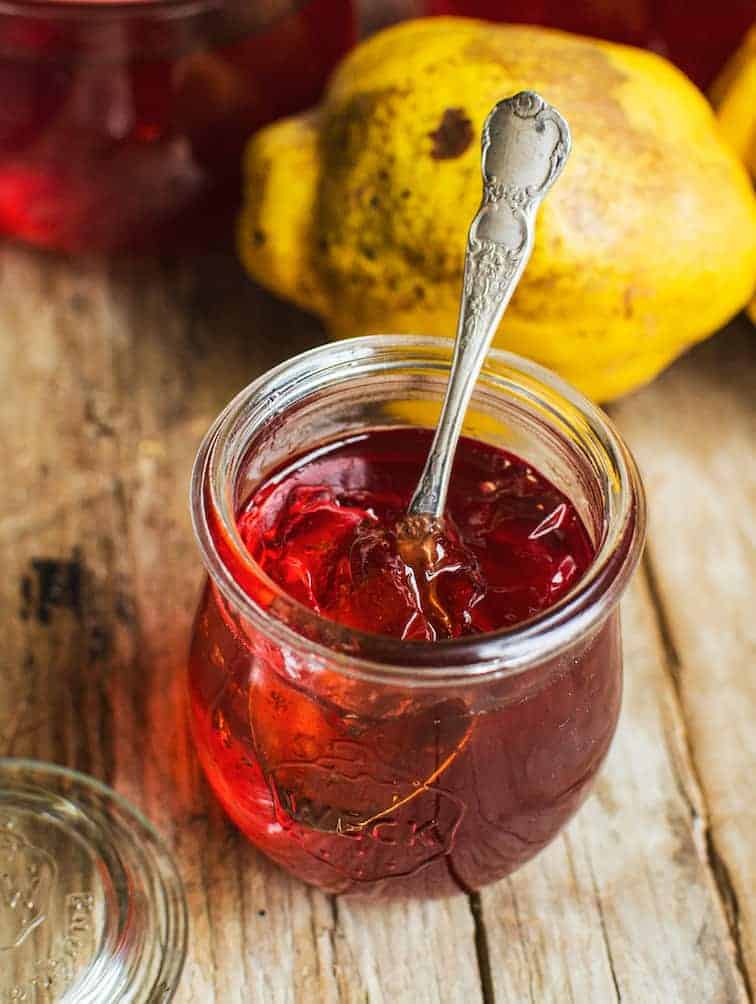
Can you eat quince raw?
You can’t eat quince raw, they’re much too astringent. However, they bake, poach and stew well, and make fantastic jelly. The quince is very high in pectin which is how the jelly can set so beautifully.
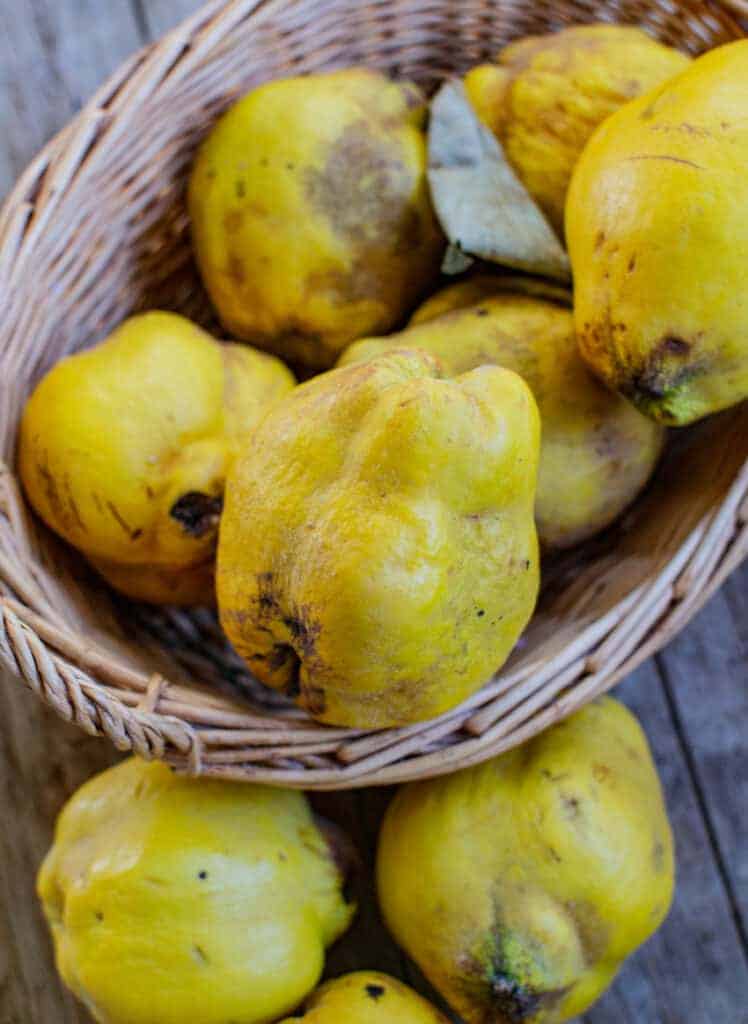
How to make quince jelly
In today’s post, I’ll walk through how to make easy quince jelly with vanilla. If you want to make it pure quince jelly, just omit the vanilla.
Boiling
Quince jelly is made by simmering quince pieces in water until they are very soft. I add a lemon at this stage too for extra flavour.
You could leave the quince whole when doing this, but roughly chopping them makes it faster and easier to fit more quince in a pot.
Once the quince is soft and cooked through they become a gorgeous peach colour.
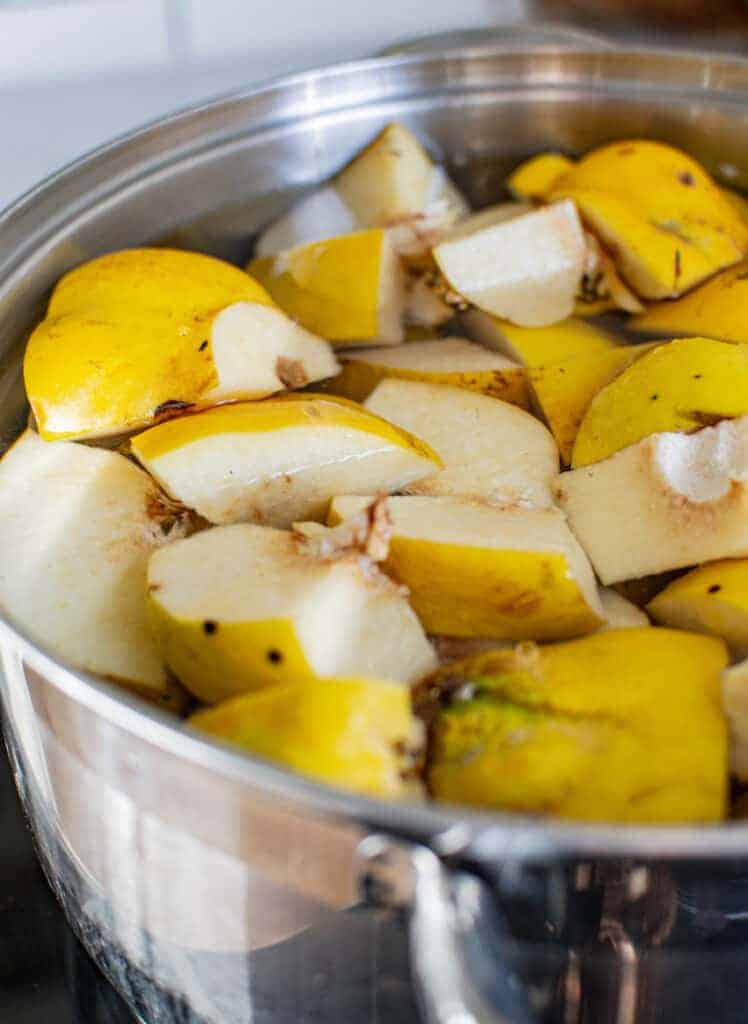

Straining
These quince pieces, the lemon and all the cooking liquid are then poured into a cheesecloth or muslin bag, to drain slowly over the next 8-12 hours.
I simply line a metal colander with the cheesecloth and balance this over a large bowl to collect the liquid. Tying the cloth up and then placing a weight on top of the quince can help it drain a bit faster.
However, if you just leave the quince to drain overnight then there is no need to do that.
In the morning, you will have collected all the light pink liquid.
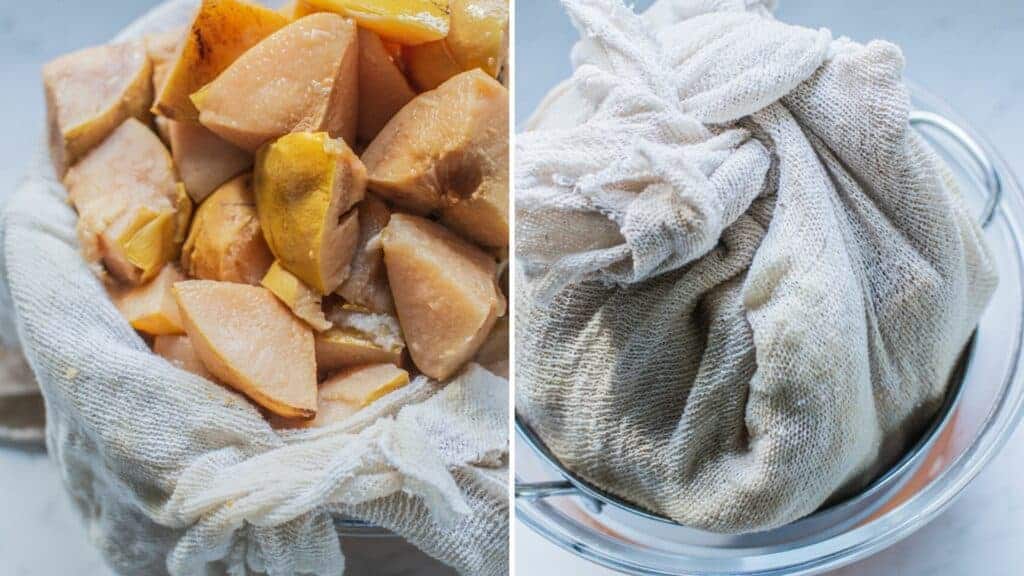
Simmering the jelly
This liquid now needs to simmer along with sugar until it’s at a jelly setting stage.
Quince jelly needs a lot of sugar, and there is no way around that. 1 cup of sugar per 1 cup of quince liquid.
This is simmered for at least 15-20 minutes until it is a deep red colour. Stay close to the stove and stir it regularly so it doesn’t boil over. Any scum building up can be scooped off.
To test that the jelly is ready to be poured into jars, take a teaspoon’s worth and drop it on a plate. Let it cool for a minute.
Once cooled, run a finger through it and see that it leaves a line, without the jelly running back to the join in the middle. If it’s too runny, keep it simmering a while longer, otherwise, it won’t set.
Once it is at the jelly setting stage, leave it to cool for a bit, and then the jelly can be poured hot and into sterilised jars.
Long-term storage
To store the quince jelly long term, lower the jars into a large saucepan of water and if possible, add any extra water needed to cover the jars by 2cm. A rack or something similar should be placed in the pot first to keep the jars from sitting directly on the bottom of the pot.
If you don’t have a rack, you could use the lids of your spare preserving jars instead. Bring the water to a boil, and once boiling keep it at a rolling boil for 15 minutes.
Once the jars are cooled, check that the buttons on the lids are concave and remove any preserving jar bands if that’s what you’ve used. Label the jars and store them in a cool, dark place for up to 12 months.
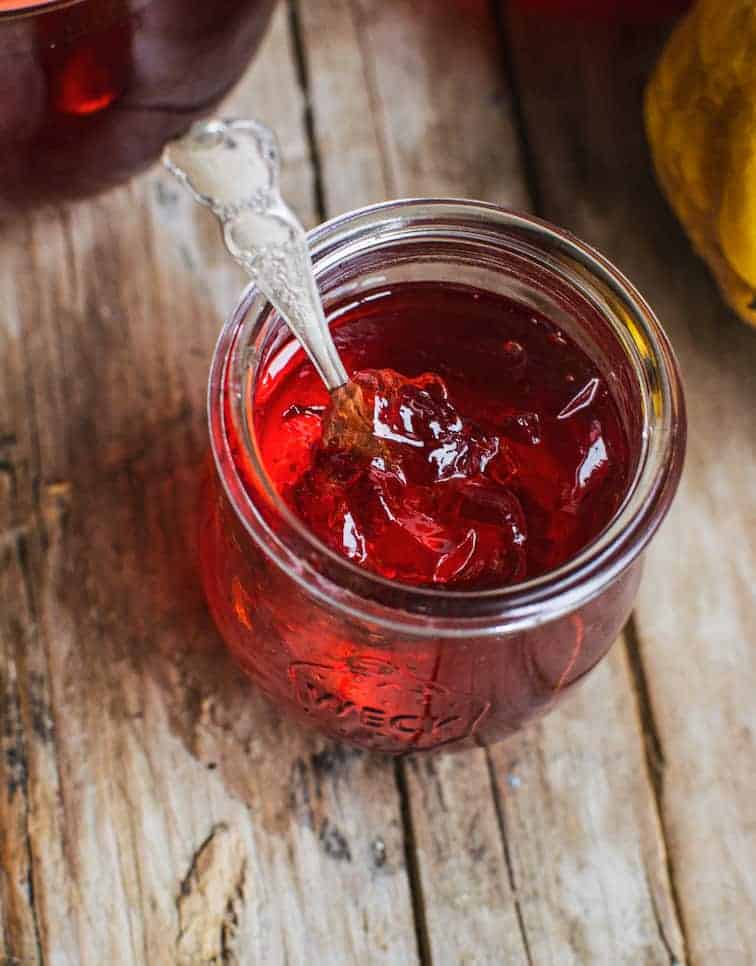
Serving
This quince jelly could be served on top of these simple seed crackers or on some of this healthy sourdough sandwich bread.
Want more preserving recipes? Try this peach preserve recipe with lavender and thyme or these homemade pickled jalapenos. If you have lots of apples, then why not make some pure apple syrup?
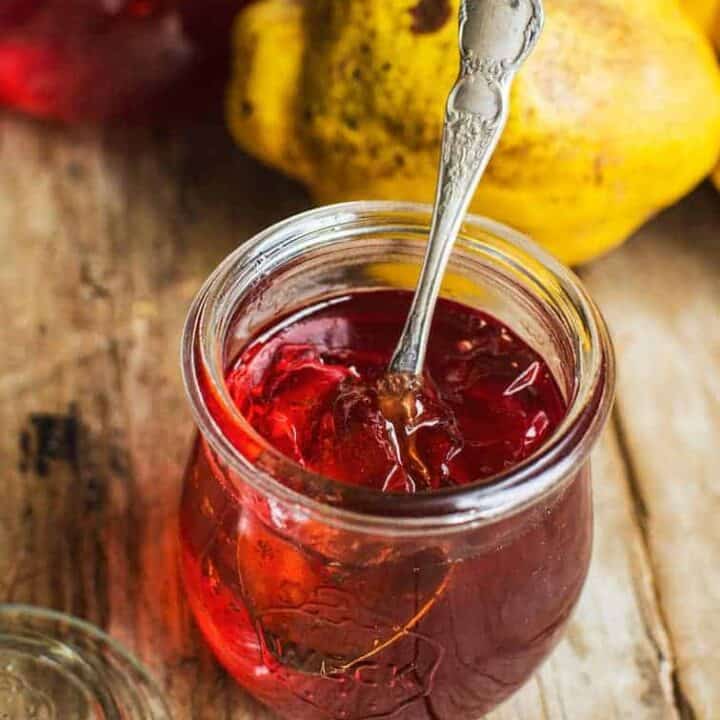
Vanilla Quince Jelly
This vanilla quince jelly is sweet and smooth and floral scented. It’s delicious on spread on pancakes, toast, or with crackers and cheese.
Ingredients
- 2 kg quinces, chopped into pieces (cut out any badly bruised bits)
- 2 whole lemons, halved
- Water, to cover the quince
- Granulated sugar (1 cup sugar per cup quince liquid)
- 2 whole vanilla beans
Instructions
- Place the quince pieces and the lemons in a large stockpot. Pour over the water until all the fruit is covered.
- Bring the water to a boil and simmer the fruit for around an hour, until the quince is very soft. Allow it to cool to room temperature in the pot.
- Once cooled, pour the fruit and the liquid into a cheesecloth or muslin cloth, suspended over a large bowl.
- Let the quince drain for at least 8 hours to collect all the liquid. It's easiest to leave it to drain overnight.
- Once the liquid has been drained, measure it out in cups and add 1 cup of sugar per 1 cup of liquid into a saucepan.
- Scrape the seeds out of the vanilla pods and add them to the liquid. Add the empty pods in as well.
- Bring it to a boil and let it simmer for around 15-20 minutes until it is a deep red colour and at a jelly setting stage. Stay close to the stove and stir it regularly so it doesn’t boil over. Any scum building up can be scooped off.
- To test that the jelly is ready to be poured into jars, take a teaspoon's worth and drop it on a plate. Let it cool for a minute. Once cooled, run a finger through it and see that it leaves a line, without the jelly running back to the join in the middle. If it’s too runny, keep it simmering a while longer, otherwise, it won’t set.
- Once it is at the jelly setting stage, remove the empty vanilla pods. Leave the jelly to cool for a bit, then the jelly can be poured into hot and sterilized preserving jars.
- To store the quince jelly long-term, lower the jars into a large saucepan of water and if possible, add any extra water needed to cover the jars by 2cm. A rack or something similar should be placed in the pot first to keep the jars from sitting directly on the bottom of the pot. If you don’t have a rack, you could use the lids of your spare preserving jars instead. Bring the water to a boil and keep it at a rolling boil for 15 minutes.
- Once the jars are cooled, check that the buttons on the lids are concave and remove any preserving jar bands if that’s what you’ve used. Label the jars and store them in a cool, dark place for up to 12 months.
Recommended Products
As an Amazon Associate, a Mighty Ape affiliate and member of other affiliate programs, I earn from qualifying purchases.
Nutrition Information:
Yield: 6 Serving Size: 20 gramsAmount Per Serving: Calories: 50Unsaturated Fat: 0gCarbohydrates: 14gSugar: 13g



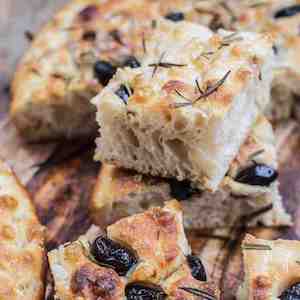
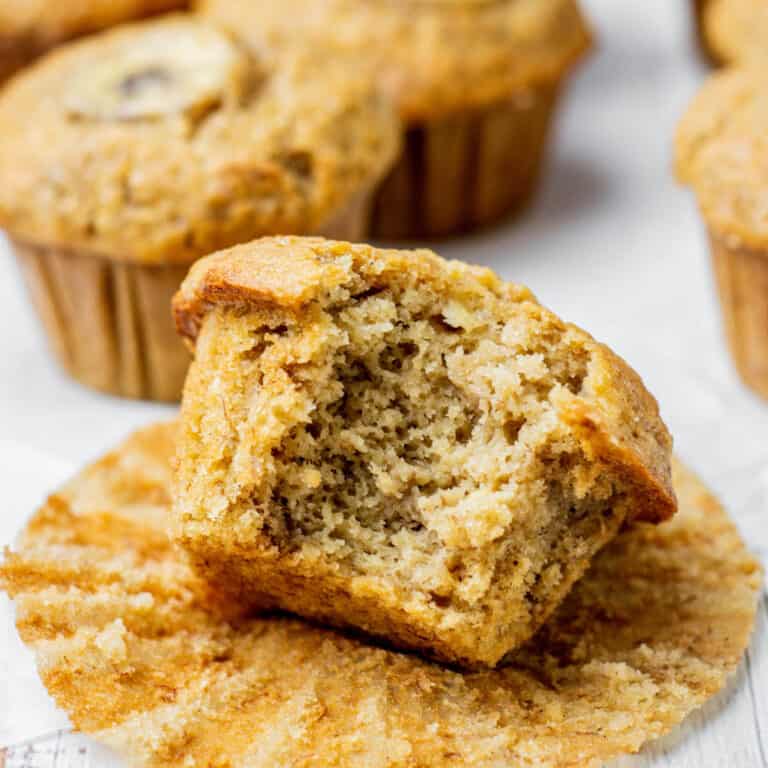
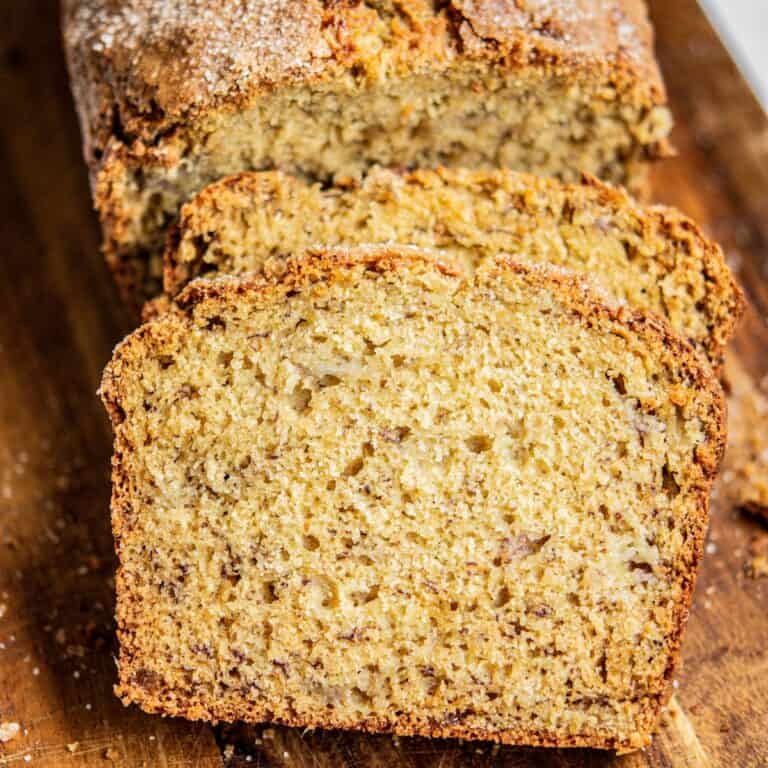
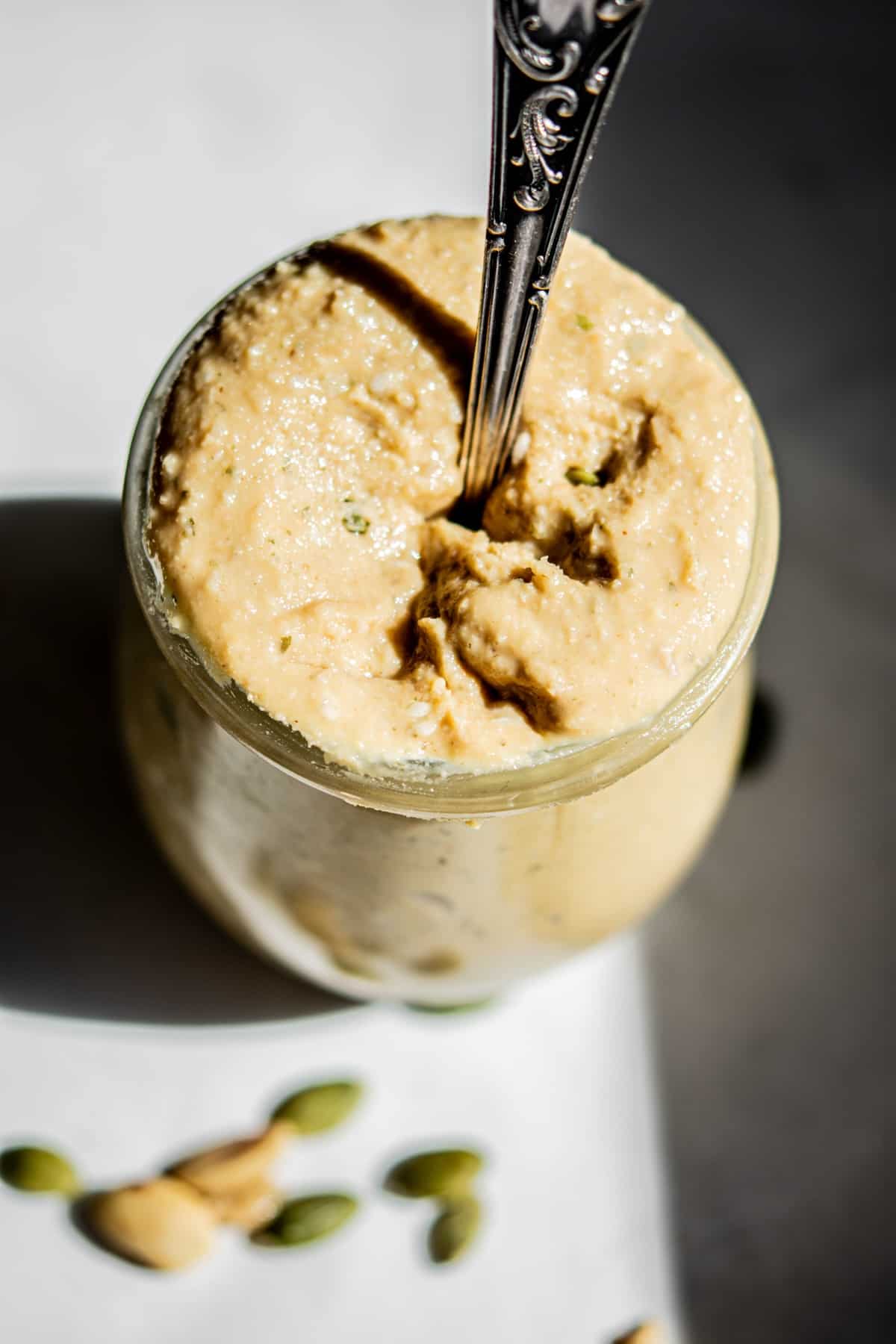
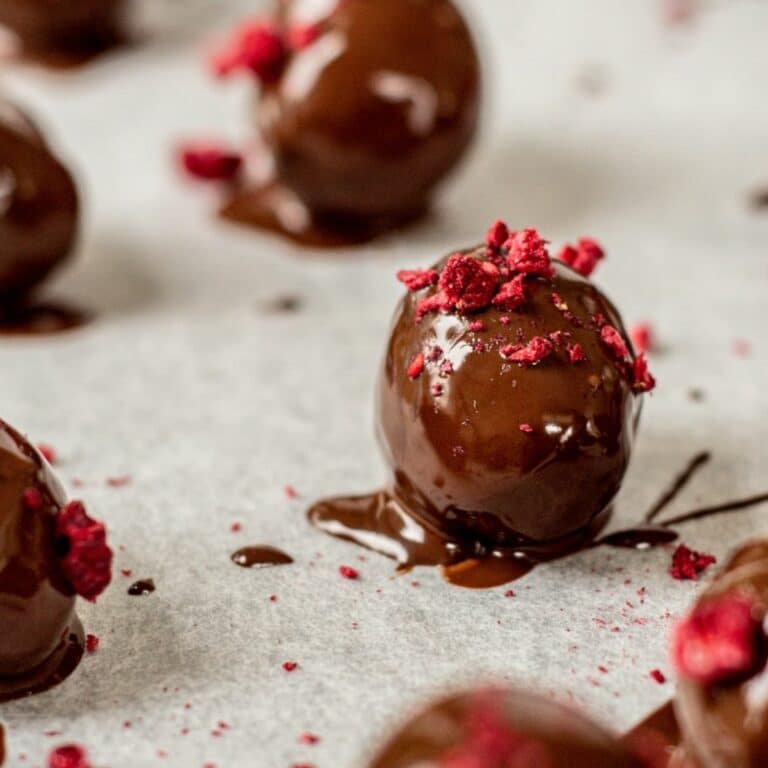
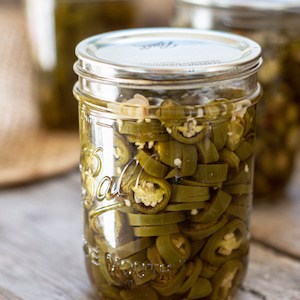
Can you make anything out of the pulp and meat in the cheese cloth? So not to waste?
Yup you can make quince paste from it. I don’t have a written recipe for that on this blog but there’s many out there 🙂
Do you keep all of the liquid that the Quince are cooked in as part of the jelly, or is it discarded and only the srained liquid from the fruit used ?
You use all the cooking liquid too